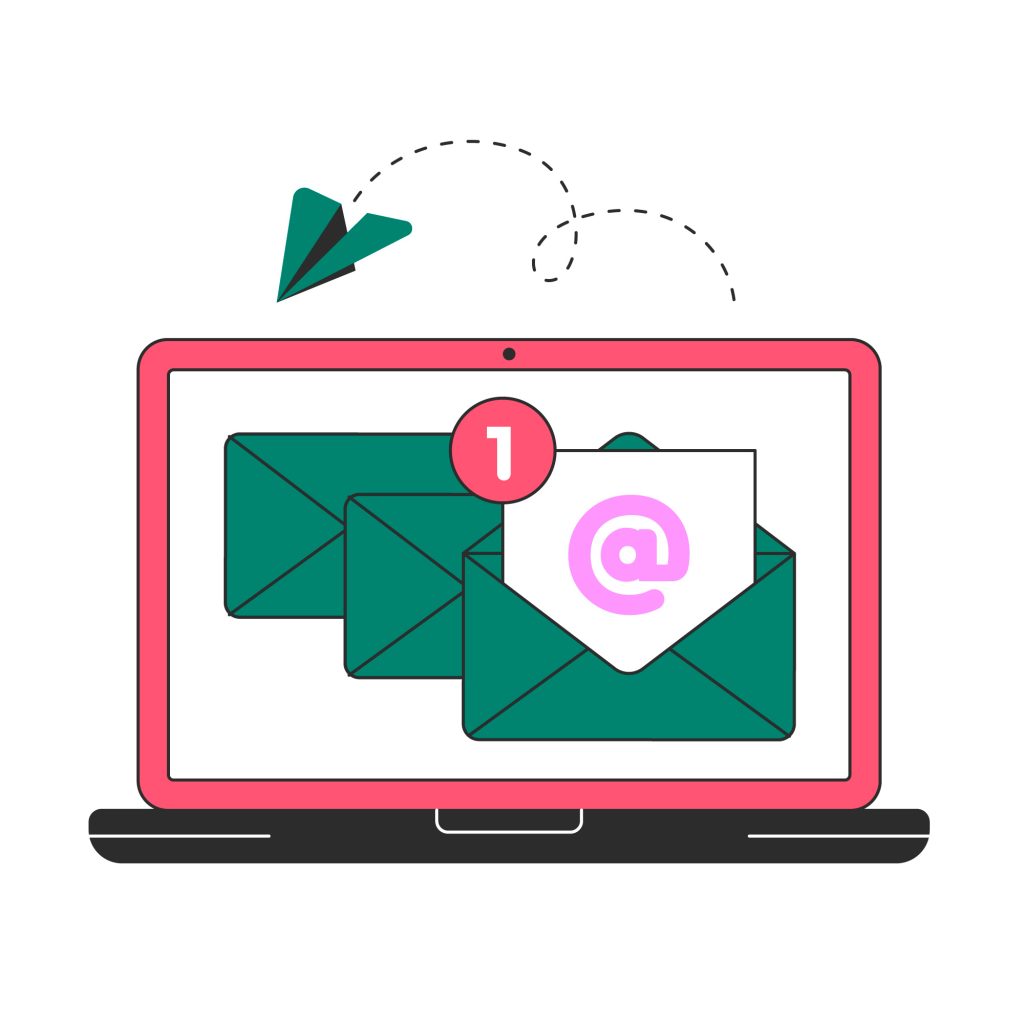5 Simple Ways to Improve Your Conversion Rate

Conversion rate, often known as CVR, is the proportion of users who have finished an action that they intended to do. A free trial, inquiry, or email newsletter sign-up are all examples of possible actions; however, the action is usually utilized when a user fills out a form and submits personal information. Additionally, a real order on an e-commerce website is referred to as a conversion. If your website is getting a lot of visitors but your conversion rate is still low, there’s probably a problem with your forms, content, site layout, or something else entirely. But, you can be passing up a ton of fresh leads, depending on where the problem is. Ways of computing conversion rates The number of conversions divided by the total number of sessions (site visits) is the formula to get your conversion rate. For instance, if you had 1000 sessions that month and 10 queries, then 10 ÷ 1000 = 0.01 is your conversion rate; expressed as a percentage, this translates to 1%. What differentiates CVR from CTR Conversion rate and “click-through rate,” or CTR for short, are two different metrics that are sometimes misconstrued. Ultimately, their acronyms are nearly identical. However, click-through rate indicates the number of clicks you obtain in comparison to impressions or views when it comes to an email link or advertising campaign. Divide the total number of impressions by the number of clicks to get the CTR. Typical reasons for low conversion rates In general, websites have an average conversion rate of only 2.35%. Nonetheless, it is reported to be roughly 10% in the case of well-known brands. It’s important to keep in mind, though, that the typical conversion rate varies greatly depending on your industry and whether you’re selling to consumers or businesses. To find out what the number should be in your market, conduct some research. However, there are three typical explanations that result in an abnormally low conversion rate regardless of the industry. Market shifts Every year, more businesses are focusing on SEO and internet promotion. This indicates that, in the midst of countless other websites with excellent content or sponsored advertisements, it is becoming more and more difficult to direct web traffic to your website. You will therefore inevitably have less site traffic and, eventually, fewer conversions if you are not upgrading SEO or advertisements at the same rate as everyone else. Additionally, more general shifts like seasonality or dwindling product demand could be impacting your CVR. Problems with the website’s architecture Even if a website may have a million distinct issues, it may come out as unreliable if it is overly busy, overflowing with information, or underdeveloped, missing essential components. If not, the call to action might not be obvious enough, or the routes leading to the conversion point—such as the inquiry form—could be overly complicated and drawn out. Perhaps your website doesn’t even have a “contact us” button, or if it does, it’s hidden somewhere, making it difficult for visitors to find how to send you a query. A site that gives the wrong impression or has a confusing structure often leads to a high bounce rate – which is exactly what we want to avoid Inefficient marketing Maybe the message of your advertisement isn’t connecting with your target audience, isn’t optimized for the proper keywords, or wasn’t intended to reach the right demographic in the first place. Even if someone clicks on the advertisement and is directed towards an audience that doesn’t seem to need your products, there’s less chance that they will take the time to complete a form and become a customer. Strategies for raising your conversion rate Make sure the correct audience sees your adverts. You must perform keyword research to determine which keywords have a large search volume compared to low competition if you want to see the best results from your ad campaigns and guarantee that they appear for your precise target audience. To target a more focused group of clients, I advise searching for long tail keywords, which are longer and more focused phrases. Furthermore, Google AdWords lets you target a particular area and demographic by letting you choose the ad’s language and location. Facebook advertisements also allow you to create hyper-targeted ads by allowing you to specify industry, role, gender, and interests. Examine the site’s layout and navigation. You won’t see many conversions if you can’t entice visitors to explore more of your website after they land on the homepage. Think about the following: These are just a few questions to run through to make sure your website is easy to use, understand, and doesn’t force the visitor to leave the tab immediately away. Lower the conversion barrier You might be taking things a little too far if you manage an EC site and your primary point of conversion is online orders. Even if a person is contemplating one of your products, they are probably comparing it to a few others when they visit your website for the first or second time. As a result, you may provide a free sample or trial and set that as your primary goal for conversion. Otherwise, you should include an inquiry form, which is likewise a less complicated conversion to receive (in comparison to a real purchase), for users who have inquiries about your products. Create a great deal of high-quality content. Creating a content library with a selection of whitepapers, infographics, product guides, on-demand webinars, etc., that can be downloaded by completing a form is another well-liked tactic to encourage more conversions. Furthermore, every piece of content on your website—from case studies and blogs to fundamental business details—should be reviewed again to see if there are any issues that could lead a visitor to leave. Making ensuring the information along the road is optimized to provide the best customer experience is essential if you want to lead a user all the way to conversion. Consider making your forms more efficient. Finally, it is critical to optimize
How Small Business Can Boost Their Brand’s Reach with Influencer Marketing

Influencer marketing is a strategy that small businesses are using more and more to expand their reach and increase brand awareness. It entails collaborating with well-known social media personalities who market goods and services to their active followings. Here’s why it works: Important Things to Think About Before Picking Influencer Why Small Businesses Should Consider Influencer Marketing A growing number of small firms are adopting creative methods to increase brand awareness because they comprehend the intricacies of the changing digital ecosystem. One such tactic that is becoming more and more popular is influencer marketing, which entails partnerships with well-known social media personalities. Businesses may reach a larger audience and establish stronger relationships with potential customers by utilizing honesty and trust. Customers are increasingly looking to influencers for advise on what to buy, which is a great way for small businesses to increase brand awareness. By serving as a bridge between companies and their audience, these influencers market goods in a genuine and relatable manner. It’s as important, though, for small firms to comprehend how these tactics operate. While some digital agencies have the know-how to plan influencer marketing campaigns effectively, others could struggle if given the wrong direction. The procedure necessitates learning and adaptability, from choosing the best influencers to gauging the success of campaigns. The combination of influencer marketing and small business has enormous development potential, despite certain obstacles. This route may result in greater sales volumes in the long run as well as improved customer acquisition and brand recognition. Influencer Marketing’s Significance in Raising Brand Awareness For small businesses hoping to succeed in the digitally-driven world of business, brand marketing is crucial. Influencer marketing is an important part of brand marketing and is a modern strategy that many digital companies use. Influencer marketing, to put it simply, is a form of advertising in which companies collaborate with well-known individuals, or “influencers,” to publicize their products. By gaining access to these influencers’ followers, small businesses can increase their brand exposure through this effective marketing tactic. Influencers with large followings on social media can impact their audience’s purchasing decisions in today’s social media-driven world. Their influence is mostly due to the fact that their supporters regard them as reliable and respectable people. Influencers that recommend your brand have a greater chance of getting their followers to think about and possibly purchase from you. As a result, influencer marketing is essential for increasing brand awareness among prospective customers. However, it’s important for small businesses to choose influencers that share their values and target audiences before launching an influencer marketing campaign. Making the wrong decision could hurt the brand and waste money on marketing. Here’s where digital agencies like Dgazelle come into play, helping small businesses find the right influencers to leverage the power of this type of brand promotion. How Influencer Marketing Is Used by Digital Agencies for Small Businesses Making their customers’ brands stand out is an ongoing struggle for agencies operating in the fiercely competitive digital space. Influencer marketing is one powerful tactic they use, and it works especially well for small firms. Influencer marketing is a strategy used by companies to market their goods or services through well-known members of their target market. This brand marketing strategy aims to increase brand recognition among the influencer’s followers—many of whom could become small company customers—rather than directly selling. Digital agencies use such people’s influence to generate genuine, organic conversations about a brand. This approach can have a big impact, especially in a world where a lot of customers rely on recommendations from influencers—people they respect and trust. It’s clear why this approach works especially well for small firms that might not have large marketing expenditures or widespread awareness given the level of trust and reach these influencers have. Digital agencies carefully select influencers whose followers closely match the target demographic of small businesses in order to optimize this strategy. Additionally, they guarantee that the influencers have a genuine relationship with the company, which gives audiences a sense of authenticity. Steps to used successfully use influencer marketing for small business brand marketing When it comes to influencer marketing, it’s not always about how many followers an influencer has; there are list of things to consider before launching campaign with an influencer and here is a summarized one Conclusion Using influencers to your advantage has great power and may hold the key to realizing your small business’s full potential for success because influencers with their loyal audience can turn to loyal customer base which is a great return on investment and raise your company’s profile overall. But never forget that your brand marketing plan can be greatly influenced by the proper influencer. So, make wise plans! GET IN TOUCH Remember, the right influencer can significantly shape your brand marketing strategy. leave the heavy lifting to us to help you partner with the right influencer
Master Digital Success: 7 Steps to an Unstoppable Digital Marketing Strategy

Just like in everything in life, if you don’t have a plan, the complexity of online marketing can seem overwhelming and quickly demoralize you. This is where a well-crafted digital marketing strategy can help. With a clear strategy, you can turn the pain of having a small online presence into the joy of having high engagement and conversion rates. In this article, we’ll walk you through the process of creating a digital marketing strategy for your business. What is a digital marketing strategy? An all-encompassing plan that describes how a company will use online channels including search, social media, email, and content marketing to accomplish its marketing objectives is called a digital marketing strategy. It acts as a roadmap, directing your marketing efforts in the direction of achieving your company’s goals. This plan of action consists of several elements, such as the following: How to Build a Digital Marketing Strategy Having a digital marketing strategy is very essential in the internet-driven world of today. Companies of many kinds, in a range of sectors, are using digital marketing to connect with their target market, advertise their goods and services, and eventually spur growth and profitability. Digital marketing, however, entails more than just slinging stuff online and hoping for the best. It involves creating a deliberate, all-encompassing strategy that takes into account your target market, objectives, rivals, and the particular characteristics of every digital platform. It involves coordinating your strategy with your overarching business goals and modifying your approach in response to performance information. Even though it could be difficult, this procedure is essential for any company hoping to thrive in the digital landscape Regardless of the sector your company operates in—home services or health—you need to have a digital marketing plan to make sure clients can find and choose your company. It could seem overwhelming to start the process of developing your digital marketing plan. But it becomes a lot easier when you take an organized approach and divide it into small steps. This post will walk you through each phase, providing guidance and insights to help you create a solid and successful digital marketing plan. Now let’s get started and investigate the realm of developing digital marketing strategies! 1. Determine Who Your Audience Is Understanding and identifying your audience is the first step in developing a digital marketing plan. This entails identifying the traits of the individuals who are most likely to find your product or service interesting. While demographic information like age, gender, income, and geography can be gathered, it’s as critical to comprehend the habits, interests, and issues that your audience faces and needs to be resolved. For instance, a nearby bakery might focus on the needs of working parents in the neighborhood who prioritize convenience and are searching for quick, simple, and delectable dinner ideas. However, a software business that provides a fitness tracking app might target tech-savvy, health-conscious millennials who exercise outside of the gym and follow fitness celebrities on social media. Remember that understanding your customer is fundamental for a successful marketing. To better understand your audience and focus your digital marketing efforts on meeting their unique wants and preferences, you can develop thorough buyer personas. 2. Establish Your Objectives and Goals Clearly defining your goals for your digital marketing plan is the next stage. Setting SMART goals—Specific, Measurable, Achievable, Relevant, and Time-bound—is essential. Your aims should be in line with your company’s overarching ambitions. For instance, an online clothes retailer may want to use content marketing and SEO to boost website traffic by 50% over the course of the following six months. By using targeted social media marketing, a nearby restaurant may seek to increase online reservations by 20% in the upcoming quarter. Recall that every business has distinct objectives. Establishing your goals up front gives your digital marketing initiatives focus and enables you to track your progress. 3. Assess Your Competitors You can comprehend the state of your industry, spot important trends, and spot chances to set your company apart from the competition by doing a thorough competitor study. Examine your rivals’ pricing, marketing approaches, and client experiences, as well as how they present themselves. For instance, if you run a software-as-a-service company that provides project management solutions, you may discover that your rivals have robust content marketing plans, a strong emphasis on sponsored search advertisements, and round-the-clock customer service. Make use of this information to identify and exploit any weaknesses in their approach. Choose the Channels for Your Digital Marketing Your target demographic and your objectives should guide the digital marketing platforms you select. Search engine optimization (SEO), pay-per-click (PPC), email, social media, content, and email marketing are a few examples of these. A B2B software business, for instance, would concentrate on LinkedIn for social media marketing, use SEO to increase organic traffic, and nurture leads using email marketing. In contrast, a B2C e-commerce company may make significant investments in email marketing to retain customers, PPC advertisements for quick exposure, and Instagram and Facebook ads. Every channel has a different set of benefits and calls for a different strategy. Through comprehension of each one and its potential advantages for your company, you may develop a multi-channel digital marketing plan that maximizes your reach and impact 5. Describe Your Content Plan The foundation of any successful digital marketing plan is content. It cultivates leads, increases brand recognition, educates consumers, increases traffic, and turns prospects into customers. The kinds of material you will produce, the subjects you will cover, the platforms you will utilize, and the frequency of your publications should all be specified in your content strategy. A health and wellness blog, for instance, might publish a variety of content, including workout videos, how-to articles, personal success stories, and educational pieces about diet and fitness. They might distribute these through email newsletters, social media, and their website. The audience should always receive value from the material, which should attend to their requirements, respond to their inquiries, and assist them in reaching their
Turn Mistakes into Opportunities: 10 Digital Marketing Mistake to fix

Since the internet has become so prevalent in our lives, your company needs to adapt as well. Digital marketing can help with brand building, product or service promotion, and business promotion. You have a reputation to establish and a viewership to reach on the internet. But like anything else, there are right and bad ways to use digital marketing. Make sure you are doing things correctly by looking over these typical digital marketing mistakes. 1. Absence of a Blog Recall that your goal is to position oneself as a reliable industry leader in addition to trying to promote your website as a business. Putting out insightful, useful, and easily readable blog posts will make you a reliable voice. Furthermore, every blog post you write adds to your site’s index, and the more indexed pages you have, the higher your site will appear in Google search results. It’s crucial that the blog be participatory in addition to being created. To get answers, post questions in the comment box. Include guest pieces or interviews with scholars or accomplished experts in your sector as well. Make the most compelling post possible every time by using this blog post writing guide. 2. Avoiding social media It’s possible that you believe you can avoid using social media. I regret to inform you that you are mistaken! It’s a vital strategy for converting leads into paying clients. You may advertise your business online by disseminating your content, connecting with consumers, and reaching your audience. Understand why you require a social media manager before attempting to handle everything yourself. 3. Ignoring Mobile Users Worldwide, mobile browsing makes for over 50% of all web traffic. In order to ensure that the load time on mobile devices is just as quick as it is on desktops, remember to optimize your website for mobile visitors as well. Make sure your website’s design has been modified for mobile viewing as well. 4. Not Offering Sales and Discounts According to a Retail Me Not poll, 2/3 of consumers made an impulsive buy just because there was a discount. Limited-time deals or online coupons make excellent pop-ups for your website, particularly when they appear on the landing page or when a visitor would quit their shopping. There should be a call-to-action on your website that is rewardable with a promotion. 5. Not Making Enough Use of Keyword Research You must prioritize SEO if you want potential clients to be able to locate you online. Determine which keywords are most popular, highly relevant, and somewhat straightforward to rank for. Next, keep an eye on your ranking for every term, the quantity of traffic each keyword generates, and whether the visitors are coming from that keyword are turning into leads. 6. Aiming for a Wide Audience It is not an economical use of your funds to use your marketing budget to reach as many individuals as possible. Select a target market that is well-defined and will provide more pertinent leads. Never assume anything about any audience or base your decisions on educated guesses. To identify your target audience and the most effective approach to contact them, conduct research. 7. Having a Badly Designed Website A call to action and a landing page with optimal optimization are essential components of every website built with digital marketing in mind. Discounts and promos must to be prominently displayed as well. It is crucial to have an engaging and educational website if you want to convert visitors into qualified leads. 8. Failing to Monitor Your Leads Numerous traffic sources, including social media, email blasts, referring links, and keywords, can produce online leads. While one of those sources may regularly produce clients, the other may only occasionally produce leads. It’s critical to understand this so that you may modify your approach appropriately. 9. Disregarding other Competitors There’s a good chance that someone else is providing the same service as you. Instead of acting as though they don’t exist, figure out how to make an impression. Determine your brand’s unique selling point and emphasize it on your website. Your website should make it very evident what sets you apart from the competitors. 10. Not Making Use of Social Proof Seeing instances of contented consumers inspires greater conversions. Case studies, success stories, and testimonials reassure visitors to your website that other customers are satisfied with your company. They have peace of mind knowing that they will be. GET IN TOUCH Boost your brand’s digital presence with Dgazelle! As your dedicated growth partners, we craft personalized digital marketing strategies that resonate with your audience, elevate engagement, and deliver tangible results. Let’s get started today!
10 Social Media Hacks That Will Skyrocket Engagement Overnight!

A lot of small firms have tight budgets. Marketing for these businesses can be a money-swapping exercise. Social media marketing, though, is changing this. It is making it possible for companies of all sizes to use a smaller marketing spend to reach a large audience. A sizable portion of your audience, regardless of your sector, uses social media. 54% of social media users use those sites to investigate products, according to data from GlobalWebIndex. According to a poll, 68% of American adults are on Facebook, whereas 78% of those between the ages of 18 and 24 use Instagram. These figures are the reason why companies are using social media to promote their goods and services. But how can you differentiate your marketing efforts given that nearly every other company is using this platform? The following nine social media tips can help you outperform the competition in terms of social media engagement: Use visual to tell your story Visuals are essential for social media growth hacking since they promote interaction with the intended audience. Compared to simple text, they draw in your audience’s attention more. People enjoy stories in general, but they enjoy them even more when they are presented visually. This explains why users interact with visual content on social media more frequently than textual content. Visuals can be used in a variety of ways on social media. Content can be repurposed into infographics, compelling calls to action, or entertaining content like GIFs and memes. Adding images to your content not only increases its shareability but also increases social media engagement with your existing clientele. By doing this, you can connect with more possible clients. Use Content to Engage Your Audience Make content that engages your audience and utilize it to communicate the narrative of your brand. Share information that empowers your audience instead of just marketing your stuff. If you post too much promotional material, consumers may start to resent your brand. Seeing posts that promote things doesn’t bother people. Sharing this kind of material frequently, though, can alienate your fans from your business. Customers will get more familiar with your brand if you provide them with content that solves their concerns. Additionally, it will inspire them to tell others about their experiences. Additionally, this will boost social media engagement and cause your content to go viral. Incorporate “Happiness” in Your Posts Can you recall the joy you experienced upon seeing pictures of a friend’s wedding or recent newborn on social media? It is not just you who feels this way. Posts on social media that show happy moments are frequently shared by users. Using images, humorous videos, emoticons, or animations can add joy to your posts. Posts with a high emotional value do, in fact, receive more shares on social media than posts with a lower emotional value. This is due to the fact that happy is the most contagious feeling among people. Think about letting your fans in on your team’s joyous occasions, much like Zappos does. Social media achievements and your own success stories could also be shared. These will support the development of an emotional bond with your audience. Go Live More Approximately 5 billion videos are viewed on YouTube every day. This indicates that video content is preferred by the majority of people. By distributing content in a format that appeals to your fans, you may boost engagement. Think about leveraging live videos to interact with your audience on social media to keep one step ahead of the competition. These kinds of films have a way of drawing in viewers more so than text or still photos. additionally aid in increasing the visibility of your company on various social media platforms. In actuality, 80% of consumers would rather watch live videos than read blogs from brands they follow. While 82% of people would rather watch videos in real time than read postings on social media. The most popular platform for live streaming is Facebook Live. When determining your social media marketing plan, you shouldn’t disregard it. Live videos provide your brand a lot of visibility because they appear at the top of news feeds. You can do a lot of things with live videos. You can demonstrate the operation of a brand-new good or service, present your workspace, or give your audience a peek at your inner workings. Seek inspiration from businesses such as AirBnB and Tastemade. Be Yourself You should make an effort to keep your image constant if you want to develop a respected brand. The name, the images, and the color you choose should all stay consistent with your identity. Your brand voice must be consistent at the same time. It should consistently reflect your personality and values. You can always maintain authenticity, even if you make it smart or authoritative. Would consumers be able to recognize your social media posts if they didn’t include your company name or logo? Utilize Scheduling Tools for Social Media The majority of social media tricks are very simple to use and powerful. Only when you consistently provide content and interact with your audience will you be able to fully utilize them. You can easily manage your marketing efforts with social media management tools. You can schedule postings, monitor analytics, and keep tabs on your activity. In addition, these features help you improve interaction with your fans. This is significant because companies are finding it difficult to live up to the growing expectations of their customers. When a customer interacts with you on social media, at least 42% of them anticipate hearing back from you within an hour. This demonstrates the rapidly rising expectations of your clientele, which you can only fulfill with the appropriate resources. You may handle communications from several platforms in one platform with the help of these tools. You’ll save time and avoid the hassle of managing many accounts by doing this. you can choose from a wide variety of social scheduling tools. You have to pay to access the
7 Little-Known Tricks to Boost Your Website Speed Today!

Increasing the website speed makes sense and is way important than you think, think about these user anticipations: When a website takes longer than three seconds to load, 40% of users leave. and 47% of users anticipate a website to load in under two seconds. But in reality, the average web page load time is 2.5 seconds on desktop and 8.6 seconds on mobile, Numbers obviously don’t lie, website visitors may not be experiencing a good user experience if they expect your page to load in two seconds or less but it is not. It is certainly time to review your website’s overall speed and user experience. Possibly with the use of a Real User Monitoring tool. Why website speed matters People anticipate a quick website, because It all boils down to control, a core factor in user experience. Humans dislike having no control over their surroundings. We are easily distracted and prone to impatience. And this shows itself in website too, users who experience a faster page load speed feel as though they have more influence over the website—rather than it controlling them. And this also help your SEO ranking (In addition, maintain the health of your organic search rankings; since 2010, Google has included page load speed as a key component in their algorithm). So when building websites, you should not just focus on the assets and style of the website but most importantly be focusing on improving overall website speed, it’s the entire design process. Here are my tips on how to speed up your website easily: 1: Begin by thinking about the webpage’s objective. What is your page’s objective? Do you want users to enter their email address or sign up for a free trial on your website? You’ll be in the best position to make adjustments if you start with the goal you have in mind for that page. Prior to even starting to write scripts, chop HTML, compress photos, or build up visuals, it’s critical to take the time to thoroughly understand the objectives of all parties involved 2. While content is important, don’t forget about the layout! The goal of information architecture (IA) is to efficiently and sustainably organize, structure, and classify content. Text loads far more quickly than images and other types of media. Reducing the amount of media on your website may sometimes be the solution to speeding up page loads. First, ask yourself if you really need this picture instead of text. What good does the media offer? I won’t go into the benefits and drawbacks of removing or leaving media on your website. But think about “What’s the goal of the page,” and make sure the media you choose takes this into account. Front-end development, interaction design, user interface design, and content strategy are all influenced by good IA. Investing time on your information architecture will eventually result in better-structured content, design, and code, which will help your website load faster and function more efficiently. It will also boost your SEO efforts, as Google will regard your excellent IA as extremely valuable and award you with a higher SERP ranking. 3. Instead of using images, use CSS. With CSS (Cascading Style Sheets), it is possible to distinguish between meaning and appearance. Excellent use in cases where a page’s loading time is sacrificed for large, high-quality images. Two prominent examples are websites for eCommerce and photography. Large, gorgeous photos and a quick-loading website are what most clients seek. If you work with clients in these areas, it’s worthwhile to learn CSS so that you may generate visually stunning content without requiring photos. Your page will load faster and perform better! Note: It’s important to keep the size of your style sheets to a minimum; there’ll be less to load. However, if you do use images, make sure to choose the right format for the job 4. Optimize your photos to increase website speed When optimizing photos, there are a few things to take into account: Which image format is better will depend on the type of image and how it will be utilized. Select the appropriate one from the list below to expedite your website: Try adjusting the quality, palette size, and other options to see which works best for each format. Eventually, you’ll discover which picture format minimizes page load time and speeds up your website. 5. Make your design mobile-friendly. Compared to desktop users, mobile users often have distinct goals and prefer information in short, easily absorbed bursts. Since so many mobile users are having trouble loading webpages, it’s a really simple technique to obtain an advantage over competitors. This is a short list of easy improvements to improve the usability of your mobile website. 6. Minimize the use of plug-ins! Have you ever worked on a website that had so many plugins installed that you were unsure of what each one did? While plugins offer fantastic additional functionality, an overabundance of them may be the main source of a slow website. When it makes sense, once again take into account using CSS instead of plugins. This will provide you the same functionality or effect without the hassle of possible crashes and security issues. By removing any plugins that are unnecessary, you can drastically lower your running expenses in addition to boosting your website speed. 7. Test your website’s performance before releasing it into the public. It’s not necessary to always fly by blind. Before deploying, you can test your site with these fantastic free tools: Evaluating the overall speed of your website won’t take long at all. Evaluate each page separately and concentrate on the minor adjustments to make your website load faster. Conclusion It’s easy to overlook the user experience aspect of website design and development in favor of flashy graphics and intricate layouts. Control is key, and users who feel in control are happier. Use these suggested tips to impress even the pickiest customers when you need a website that loads quickly, looks good, and
Boost Your Social Media Strategy: Avoid These 5 Costly Mistakes That Are Losing You Followers

Introduction In today’s digital age, having a strong social media presence is crucial for businesses looking to reach and engage with their target audience. However, even the most well-intentioned social media strategies can fall short if they are plagued by common mistakes. These errors can lead to a loss of followers, decreased engagement, and ultimately hinder the success of your social media campaigns. To ensure your social media strategy is on the right track, it’s essential to avoid these 5 costly mistakes that could be costing you followers. Keep reading to learn more about how to boost your social media strategy and avoid these pitfalls. The importance of a strong social media presence Establishing a strong social media presence can significantly impact your brand’s visibility and credibility. Consistent and engaging content, thoughtful interactions with followers, and strategic use of hashtags are key elements. By leveraging these aspects, brands can not only attract but also retain followers, fostering a loyal community. Monitoring analytics and staying abreast of platform algorithm updates are vital for optimizing your social media strategy. Remember, a robust online presence is a long-term investment that requires dedication and adaptation to evolving trends. Stay tuned for more insights on enhancing your social media strategy and maximizing follower growth. Mistake 1: Inconsistent posting One of the most common mistakes brands make is inconsistent posting on social media platforms. Regular, timely posts help maintain follower engagement and visibility. A sporadic posting schedule can lead to decreased reach and ultimately, loss of followers. To avoid this costly error, create a content calendar and schedule posts in advance. Consistency not only keeps your audience interested but also signals reliability and commitment to your brand. Stay mindful of posting frequency and timings to maximize your social media strategy’s effectiveness. Stay tuned for more valuable tips to avoid costly mistakes and enhance your follower growth. Mistake 2: Not engaging with your audience Another critical mistake that can cause you to lose followers is not engaging with your audience. Social media is all about building relationships, and failing to respond to comments, messages, or mentions can make your followers feel disconnected and unappreciated. Take the time to interact with your audience by responding promptly, asking questions, and showing genuine interest in their opinions. Engaging with your audience not only fosters a sense of community but also boosts brand loyalty and encourages active participation. Remember, social media is a two-way street, so make sure to prioritize engaging with your followers to ensure a strong and lasting connection. Mistake 3: Ignoring negative feedback Ignoring negative feedback is a costly mistake that can harm your brand’s reputation and cause you to lose followers. While it may be tempting to avoid addressing criticism, responding promptly and professionally to negative comments or reviews showcases your commitment to customer satisfaction. Acknowledge the feedback, apologize for any shortcomings, and offer a resolution to show that you value feedback and are dedicated to improvement. Embracing negative feedback as an opportunity for growth not only demonstrates transparency but also builds credibility and trust with your audience. Remember, addressing criticism constructively can turn a negative situation into a positive outcome and win back followers’ trust. Mistake 4: Focusing on quantity over quality One common social media mistake is prioritizing the quantity of posts over the quality of content. While consistency is essential, flooding your followers’ feeds with mediocre or irrelevant posts can lead to disengagement and unfollows. Instead, focus on creating high-quality, valuable content that resonates with your audience. Craft compelling stories, share informative insights, and engage in meaningful conversations to foster genuine connections. Prioritizing quality over quantity not only enhances your brand’s credibility and reputation but also encourages better engagement and loyalty from your followers. Remember, quality content speaks volumes and has a lasting impact on your social media strategy’s success. Mistake 5: Not utilizing analytics to track success Another critical mistake in social media strategy is neglecting to leverage analytics tools to track performance. Monitoring key metrics such as engagement rates, reach, and demographics can provide valuable insights into what content resonates with your audience and what strategies are working effectively. Without analyzing these data points, you may miss out on opportunities to optimize your approach, improve audience targeting, and enhance overall performance. Utilizing analytics helps you make informed decisions, refine your content strategy, and ultimately drive better results. Embrace the power of data-driven insights to fine-tune your social media strategy and maximize your impact. Conclusion: How to improve your social media strategy and retain followers In conclusion, avoiding costly mistakes in your social media strategy is important for retaining and attracting followers. By utilizing analytics tools to track your success, you gain valuable insights that inform your decisions and help refine your content strategy. Remember to engage with your audience authentically, consistently provide value, and stay updated with current trends in order to remain relevant. Implement a content calendar to stay organized and plan your posts strategically. By optimizing your approach, improving audience targeting, and leveraging data-driven insights, you can enhance your social media strategy and drive better results. Stay proactive, adapt to changes, and prioritize building meaningful connections with your followers to cultivate a loyal and engaged community. GET IN TOUCH Amplify your brand’s social media presence with Dgazelle! We’re not just experts; we’re your dedicated partners in growth. With our tailored social media strategies, we’ll connect you to the right audience, boost engagement, and drive real results. Ready to boost your brand presence ? Let’s start today!
Double Your Leads with This Proven Strategy

The key to a successful business is leads generation, which goes beyond creating a product and launching it. For businesses hoping to develop their clientele, boost sales, and eventually spur expansion, generating leads is fundamental. Even while getting new leads is by no means simple, there are tried-and-true tactics that work in a variety of sectors that every company may use. We’ll go through doable tactics in this post to help you revive your lead generating campaigns. 1. Design content marketing resources using a user-focused approach to draw in viewers. One effective strategy for generating leads is content marketing. Businesses may draw in and interact with leads by producing rich and pertinent content that aligns with the needs of their target audience. Whether you’re producing blog articles, films, infographics, podcasts, or social media material, carefully crafted and released content lets you show off your knowledge, win over supporters, and establish credibility with prospective clients. Delivering top-notch material on a regular basis will help you draw in readers, increase website traffic, and turn site visitors into leads. 2. Drive traffic to your strategic pages by identifying opportunities in your SEO strategy Businesses trying to increase their online lead generation must invest in search engine optimization, or SEO. You may improve your exposure in search results and draw in organic traffic by optimizing your website and content for search engines. Good link-building, on-page SEO, and keyword research techniques can raise the rankings of your website considerably. You’ll likely draw in qualified prospects who are actively looking for the goods or services you provide if your website shows up on the first page of search results. Local brick and mortar businesses can gain from using a local SEO strategy as well. Potential clients that are actively searching for goods or services in your region can be your target market. There are a number of strategies involved in local SEO, such as optimizing your Google My Business profile, creating location-specific content, and obtaining local citations and reviews. 3. Collect user data easily with gamified marketing Gamification is a perfect tool for lead generation since it uses game mechanics and concepts to increase user engagement in non-gaming contexts. Games, surveys, competitions, and quizzes that draw in new clients are all readily customizable. How? They can convey a story, are interactive, and appeal to human tendencies toward competitiveness and distraction almost universally. In addition to amusing and educating your audience, these interactive experiences offer insightful information and data that can be utilized for lead nurturing. Additionally, you may use intermediary screens to show data collecting screens to your audience, encouraging them to provide personal information and opt-in to email marketing because they’re more likely to do so. 4. Webinars and events Events and webinars are great ways to showcase your knowledge, goods, and services while generating leads. You may draw in a targeted audience and establish your company as a thought leader in your sector by holding webinars or taking part in industry events. You can connect with prospective clients during these interactive sessions, respond to their inquiries, and highlight the benefits of what your company has to offer. Attendees’ contact information can be used to efficiently follow up with and nurture these prospects, eventually turning them into paying clients. Pro tip: For even greater outcomes, gamification can be implemented in events, which are a perfect arena for it. Incorporating gamified experiences into event schedules can serve as a conversation starter, encourage consumers to interact with your content through new channels, solicit feedback, and even be used to encourage users to visit or utilise different booths or areas of your event – whether it’s a virtual event or an event taking part inside a physical venue. 5. Use live chat Because it allows you to communicate with website visitors in real time, live chat is an invaluable tool for lead generation. By adding a live chat function, you may maximize the likelihood that a visitor will become a client by offering prompt assistance, responding to queries, and addressing issues. This will also increase visitor engagement. If you now offer live chat, evaluate how well it performs, take a close look at the rigid processes you have in place to guarantee constant quality from operator to operator, and optimize for the greatest customer experience. Gamification can be effectively implemented in situations where your live chat resource has limited hours of operation. You may include Product Recommendation Quizzes on targeted sites for particular ranges. These quizzes ask users a series of questions regarding their needs, and ultimately recommend a product at the end of the experience. By including a contact form with options to opt-in, you can not only potentially create a conversion, but it can generate leads for you 24/7. Conclusion Using all of these tried-and-true lead generating techniques will greatly improve your company’s capacity to draw in and win over new clients, which will ultimately boost sales and expansion. Profitability and yearly growth are derived from conversion, which begins with leads. The foundation of all these tactics is discovering and drawing in an audience, interacting with that audience, and establishing a rapport with them so that you can take advantage of sales chances. GET IN TOUCH With our proven strategies and tailored approach, we’ll supercharge your lead generation, connecting you with the right audience and boosting your conversions like never before. Ready to see results? Let’s get started!
5 Strategic ways to Boost Your Website Traffic by 50%

Boost Your Website Traffic
How to Create Successful Email Drip Campaigns.

One excellent way to interact with and get to know your customers is through email marketing. Emails are automatically sent out by drip campaigns in response to predetermined actions or timetables, simplifying the procedure. Email drip campaigns can be used for any purpose, such as introducing yourself to new clients or turning leads into repeat business. They are also very easy to set up and use. Learn about email drip campaigns, how to start one, their advantages, and some successful instances by continuing to read. What is email drip campaign A drip campaign is a sequence of emails that are delivered automatically in response to a predetermined schedule or user activity. It is also referred to as automated marketing or automated email campaign. Delivering the appropriate information to the right person at the right time is the goal of drip marketing. You may create campaigns, for instance, to send out welcome emails to those who join your email list and emails with price details to visitors who have been looking at your products page for a few days but haven’t made a purchase. To ensure that your email content is as specifically targeted as possible, you can segment your email list however you see fit and apply different triggers to different groups. The recipient’s name and other details can be included to drip emails, which are prewritten and can be modified. Types of email drip campaign These are just a few of the numerous email drip campaign configurations you can create. Welcome email A new subscriber is introduced to your business and extended a warm welcome to your online community through welcome emails. They provide your company a more human touch and inform clients of what to expect from your communications. A discount code may be included as a token of appreciation for signing up. Onboarding emails While welcome emails and onboarding drip emails are delivered at the beginning of a customer’s relationship with your business, onboarding drip emails offer more practical information about your company than welcome notes do. Users who receive onboarding emails may be informed of anything particularly significant about your business or product, as well as how you differentiate yourself from rivals in the industry and how to get in touch with you should they have any problems. These emails may also include instructions on what the recipient should do next to maximize their benefit from your company. emails about shopping cart abandonment When a visitor adds something to their online shopping basket and then departs from your website without completing the purchase, this is known as shopping cart abandonment. When this occurs, you can utilize drip campaigns to remind the visitor via email that they are intending to make a purchase. emails for subscription renewal Use a drip campaign to inform clients that their subscriptions are about to expire in order to build your company’s credibility and give them a sense of importance. Thank your clients for their business in the email and make it simple for them to unsubscribe if they so choose. Listing building emails In order to ask new website visitors to consent to receiving emails from you, you can also run a drip campaign. Building your email list with clients who are really interested in your business and are likely to interact with your material is made simple using this method. How do you create an email drip campaign? Here are six easy steps to start an email drip campaign of your own. 1. Determine your triggers and audience. Determining the target audience for the emails is the first and most crucial stage in an email drip campaign. Your audience needs to be divided up, and you need to choose which groups and triggers to employ to reach them. A wonderful method to tailor your drip campaigns and provide your consumers the information they need at the correct moment is to identify your audience. This will help them feel appreciated and encourage them to become repeat customers. Based on user activity, clicks, and frequency of visits, target your customers. 2. Establish your objective. Setting a target is the second most crucial step in developing an effective email drip campaign. It is easier to organize the other components of your campaign and maintain focus when you have a clear goal in mind. When creating a goal, follow the SMART approach: make it time-based, relevant, measurable, attainable, and specific. What outcomes are you hoping the drip campaign will bring about? That’s what you want to achieve. 3. Compose your email. Use the knowledge you now have about your aim and target audience to help you write the email copy. Your email should have a clear call to action (CTA), be helpful, and catch readers’ attention. Consider your goals and what you would like the user to do. Do you want the person receiving it to buy something? Would you like to share product information? That ought to be reflected in the text. Make sure your message is understandable and authentic to the voice and brand of your business. 4. Make a campaign plan. Plan your drip strategy from start to finish to guarantee its success. This entails choosing how to divide up your clientele, establishing your objective, and figuring out how to gauge the campaign’s effectiveness. When organizing your drip campaign, keep these things in mind. 5. Start the advertising campaign. You are prepared to start the campaign once you have chosen which numbers to track, developed your message, and identified your target audience and aim. You have two options: use some of the top email marketing services or marketing automation tools, or put your own email drip campaign software into action. Creating emails and scheduling them for automatic sends based on various triggers is made simple by these tools. 6. evaluate the campaign. For a complete picture of your drip campaign’s effectiveness, you should evaluate it both during and after it is put into action. Utilize the metrics you selected during

